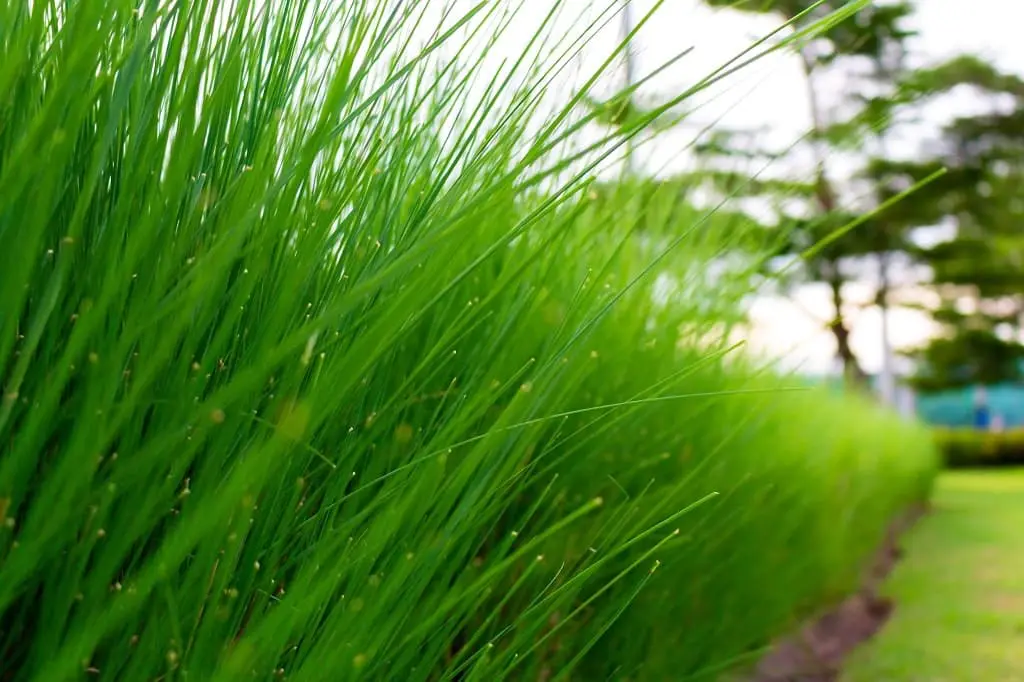Maintaining your lawn properly is important, and the first step is understanding the grass you have or need, particularly regarding warm season vs cool season grass. Your location plays a huge role in which grass is best for your lawn — cities like Milwaukee and Minneapolis won’t have the same grass as places like Miami or Austin. We’re breaking down the differences below.
Cool Season Grasses
Cold weather grass is a necessity for areas that experience lower temperatures, like the Midwest. If you’re looking for the best grass for Wisconsin, it won’t be warm-season grass. Cool-season grasses tolerate freezing temperatures, but thrive best in 60-75ºF weather, usually growing the most in the spring and fall.
They are grown from seed and are generally best kept at a height of about 3-4 inches. Blending different types of cool-season grasses can help you avoid diseases and various pests.
The most popular cool-season grasses are:
- Fescue (Tall and fine)
- Creepy bentgrass
- Ryegrass (annual and perennial)
Warm Season Grasses
Warm season lawn grasses are known for their ability to, and preference for, growing in extremely hot, and often humid, the weather of late spring all the way through very early fall. It’s important to note that this grass should be mowed twice before fertilization and that fertilization must be done in late spring and summer, and that doing it too early or late will result in weaker grass. Also, its resistance to drought, perfect for areas where irrigation and watering must be kept to a minimum.
The most common warm-season grasses are:
- St. Augustine grass
- Bahiagrass
- Bermudagrass
- Zoysia grass
- Centipede grass
- Kikuyugrass
Grass for Transition Zone
In certain areas of the U.S., known as the Transition Zone, the weather is perpetually fluctuating, going from one extreme to the other. This makes it difficult to tackle the question of the warm season vs cool season grasses.
The most popular solution to this problem is this: in the summer, continue to grow warm season grasses and then later overseed cool-season grasses to prepare for fall and winter.
Comparing Warm-Season vs Cool-Season Grasses

It’s essential to know the differences between the two when discussing cool season vs warm season grass. Each has its own specific needs, characteristics, and effect on the environment.
Establishment of Warm-Season vs Cool-Season Grasses
Cool season grasses are easy to plant, as all you need is a regular grass drill, grain drill, or cultipacker seeder. Seeds are easily accessible, affordable, and grow rapidly, resulting in less weed competition. These seeds have greater nutrient requirements, aren’t tolerant of bad soil conditions, and have a higher seedling mortality rate during drought.
Warm season grass seeds are more expensive, require a specialized drill to plant, and are harder to find. However, they don’t require fertilizer and can better tolerate bad soil conditions and drought periods. Additionally, weed competition might be an issue and the seeds will be slower to germinate.
Maintenance of Warm-Season vs Cool-Season Grasses
Lawn maintenance of cool season grasses requires a mowing rotation of 2-3 years as well as overseeding with legumes within 3-4 years. It’s important to know that grass can thin out and will require reseeding along the road. Additionally, certain herbicides will be effective for any necessary weed control.
Warm season grass, on the other hand, does not require reseeding as it will last longer. It can also be hayed or grazed if done carefully and certain herbicides will work effectively for weed control. On a 3-4 year rotation, the grass will need light strip disking or prescribed burning for proper maintenance.
Wildlife Habitat of Warm-Season vs Cool-Season Grasses
Cool season grasses tend to be a great source of nutrition for wildlife in the form of insects and green foliage, even in early spring. However, because this grass is easily matted down as it ages, the amount of overhead protection, feeding, and nesting it offers is reduced.
Warm season grass, thanks to the nature of bunch grasses, makes a fantastic feeding and nesting habitat, allowing openings for feeding without sacrificing overhead protection. Even in the winter, stiff-stemmed warm season grasses will remain standing and provide proper protection. Also, plantings are more diverse, allowing for an even mix of insect populations and plant species.
Conclusion
Now that you have a better understanding of the difference between warm and cool season grasses, it’s time to start landscaping. If you are looking for trusted commercial landscaping services, Earth Development is here to help! We work with a variety of industries, from retail to health care to office complexes, and more. Give us a call!
